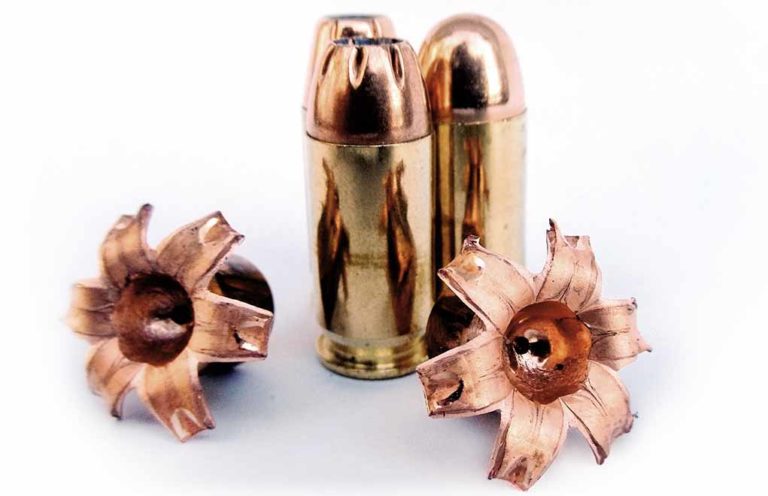
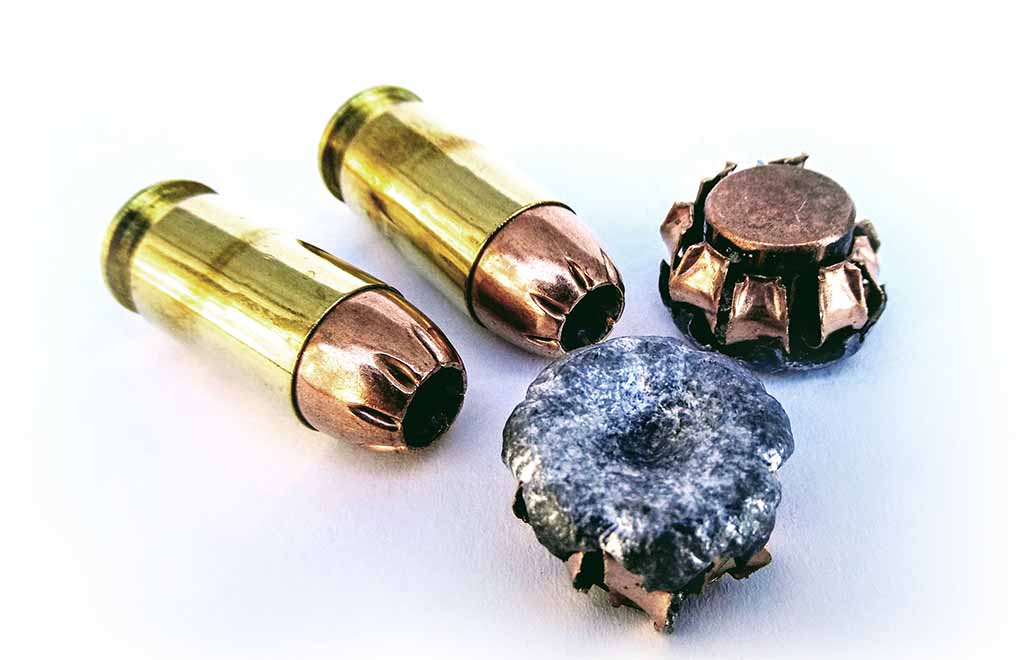
Don't believe the hype over the .45 ACP as some dusty relic of a bygone era. The cartridge is better than ever and is here for the long haul.
A Few Reasons Why The .45 ACP Still Rules The Roost:
- Tested in countless wars, Americans have an inherent trust in the cartridge.
- While leveled somewhat by modern bullets, the .45 still punches a larger hole in a target.
- Inherently a subsonic cartridge, it funtions well out of nearly every barrel length.
Americans did not develop the first handguns in the world. However, it can be said that we were truly the first country to create a culture surrounding the handgun. The story of this is also the tale of what is arguably the quintessential American handgun cartridge: The .45 ACP has survived into our modern era, and today, it’s better than ever. However, its relevance is hotly debated.
To really understand why the .45 ACP has lasted as long as it has, all you have to do is look at the tumultuous era of design that existed in the second half of the 20th century. From the time it was introduced prior to World War I until it was (mostly) replaced in the 1980s, there really wasn’t anything better out there.
Establishing Trust
There’s a reason Americans trust the .45 bore. Every time the country goes into battle with some smaller or lighter ammo type, disaster often follows. This was true when the .38-caliber was issued to replace the .45 Colt, and it was again true when the 9mm was adopted to replace the .45 ACP.
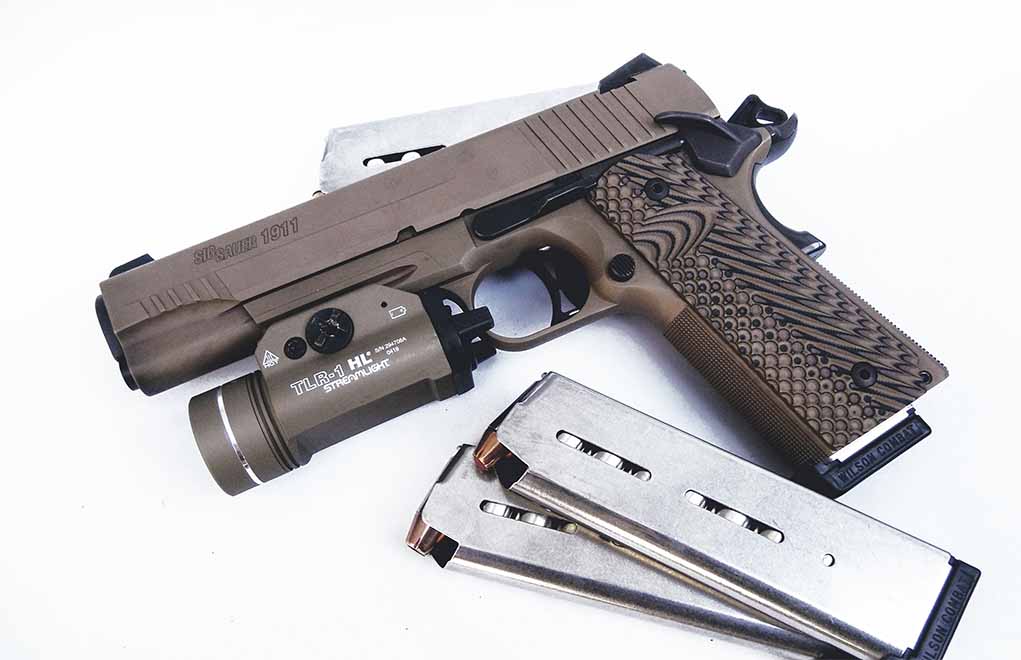
Because of the terrible combat in the Philippines during the Moro Rebellion (1902–1913), the military wanted a modern gun equal in power to the .45 Colt. It could be said that the American experience in the Philippines soured our view of .38-caliber weapons—including 9mm. A new round was needed, and the choice was the long-standing American favorite, .45-caliber. History happens fast, and by 1904, a design was ready.
Many detractors of the .45 ACP see it as an antiquated round designed around a poor understanding of ballistics in botched tests. While it’s true that the round was developed, at least in part, by shooting corpses and animals, the results can’t be argued with. The engineers responsible for the .45 ACP—including one John Moses Browning—used the best methods of data collection available at the time and delivered a 230-grain bullet at 850 fps. This became the baseline standard for multiple generations of gunfighters and the round to beat for the next 100 years.
The trust forged between Americans and the .45 ACP made it the sidearm cartridge-of-choice in virtually every conflict to date. This further reinforced the relationship the cartridge had with the shooting public. Even today, many other cartridges designed to replace or improve upon the .45 ACP have fallen short.
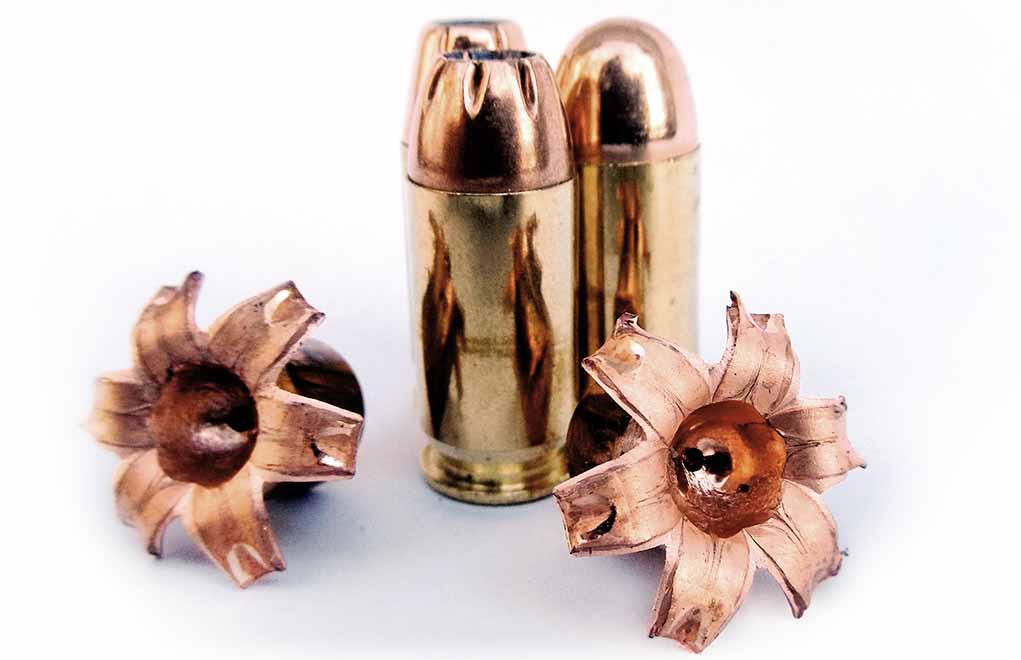
Americans truly trust the .45 ACP and the 1911 platform, even if ballistics science says there are better options. A 1911 in .45 ACP is culture. Cartridges such as the .40 S&W and 10mm Auto were supposed to do away with .45 ACP. They didn’t.
Even groundbreaking cartridges such as the 6.5 Creedmoor have struggled with maintaining relevance. The greatest merit that the 6.5 CM had was that it offered an improvement over .308 Winchester in an identically sized rifle. There are already rounds that exceed the 6.5 CM in many arenas: 6mm Creedmoor, 6.5 PRC and others like them.
The same thing happened to 10mm Auto: It’s a popular niche round today, but it’s nowhere near the level of .45 ACP in terms of mass acceptance. The trust just isn’t there for most firearms consumers and, in most cases, it’s seen as a “boutique” solution to a non-existent problem.
Raise Your .45 ACP IQ:
- 10 Top .45 Pistol Options For Any Budget
- .45 ACP vs 9mm: Which Is Better?
- .45 Ammo Choice For Self-Defense
- 10mm Vs .45 ACP: Making the Right Choice
Ballistics of the Modern .45 ACP
When we look at how bullets have improved, even in the past 10 years, there’s a significant and valid trend going toward the 9mm in carry guns, law enforcement and military use. As far as technology is concerned, it’s improved substantially. Recent studies by the FBI and others have confirmed that when using modern jacketed, hollow-point, high-performance ammunition, there’s very little difference between major law enforcement calibers such as 9mm, .40 S&W and .45 ACP. The studies essentially confirmed that 9mm can accomplish the same thing as the other two when using modern ammunition.
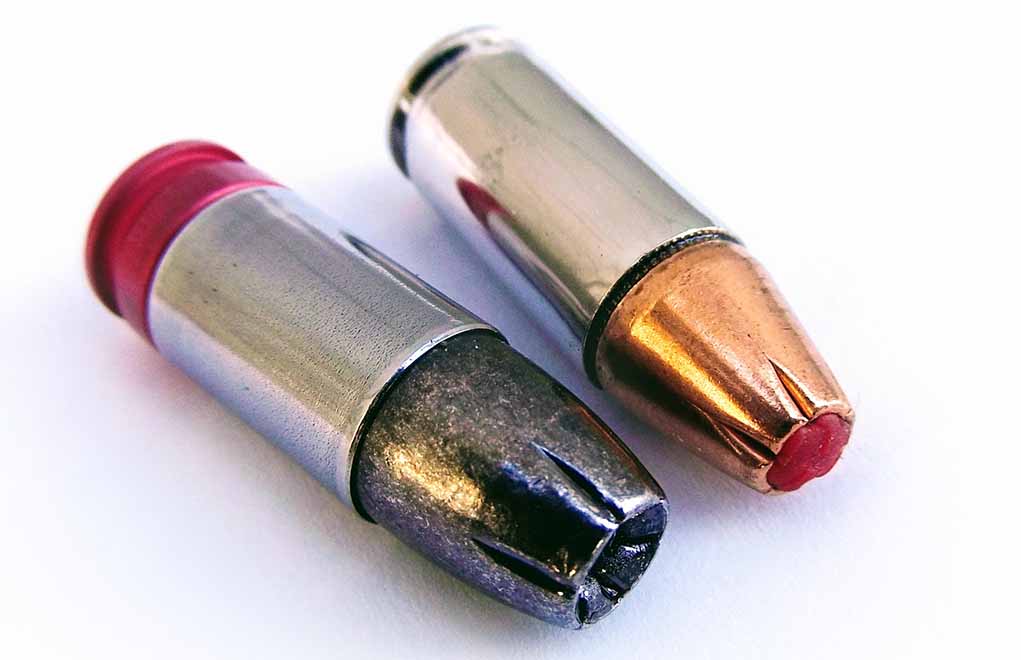
However, there’s a pretty big difference when looking at FMJ ammo and military bullets. The .45 ACP offers a tremendous advantage in this respect, and we haven’t really had a need to go the same distance in technology with the .45 ACP.
Another area to address is velocity. The .45 ACP is an inherently subsonic cartridge that’s designed for optimum performance at those lower speeds. It’s difficult to find a .45 ACP cartridge that doesn’t function well. There isn’t a large degree of difference in performance from barrels between 3 and 6 inches, considering that there isn’t a large disparity in velocity between those barrel lengths. Jacketed hollow-points and other expanding ammunition will typically work just as well in a compact .45 or a full-sized pistol. Many types of 9mm ammunition aren’t geared toward low velocity. Sometimes, there are significant performance gaps between compact carry guns and full-sized duty guns.
There are certainly ammunition types that have come about recently that offer a tremendous upgrade to this classic. Among these is the advent of non-expanding fluted projectiles such as Black Hills Ammunition’s HoneyBadger line.
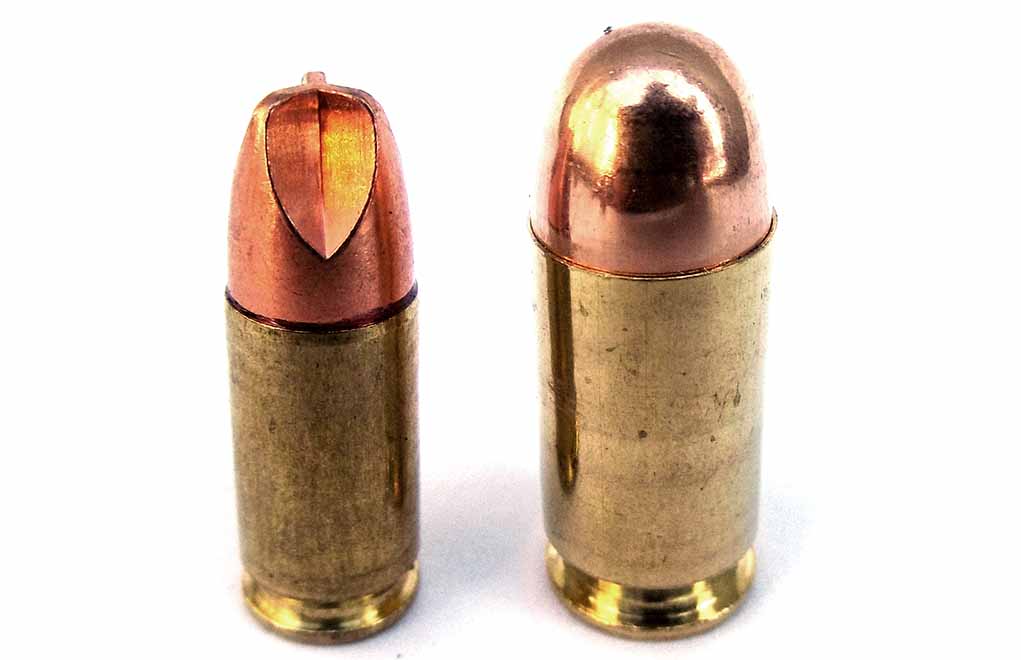
This ammunition takes the .45 ACP to a different level of performance through penetration and tissue displacement. While smaller calibers benefit the most from this type of bullet, what it offers for rounds such as the .45 ACP is nothing short of stunning. The bullets behave almost like an FMJ but are able to penetrate a diverse range of materials with no risk of clogging, as will a hollow-point. Damage is then done not through expansion, but by means of the rotation of the bullet, itself, causing tissue displacement. The ammunition is also significantly more accurate than many cup-and-core-style bullets or hollow-points.
Another incredible, yet extremely rustic, ammunition offered for the .45 ACP comes in the form of hardcast lead from Buffalo Bore, which is known for producing some of the most powerful ammunition on the market. The 255-grain hardcast load is quite powerful and can throw a bullet at 1,000 fps from a 5-inch barrel. Penetration in gel is dramatic, with bullets commonly passing completely through 36 inches of bare gelatin. This particular load is as powerful as the original black powder .45 Colt loads for the 7½-inch Single Action Army … which is saying something!
Long Live the 1911
It’s impossible to have a discussion about the .45 ACP without looking at the 1911 pistol. The two are forever linked. There have, of course, been other calibers of 1911 made, although none ever achieved the popularity in the 1911 platform as the .45 ACP has.
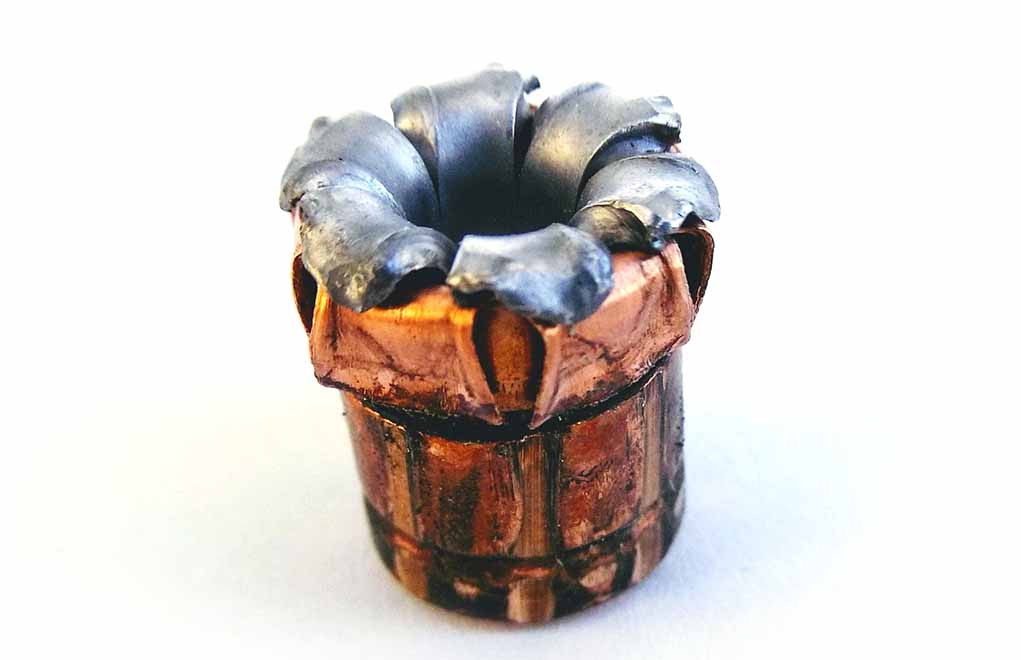
The 1911 is an old, outdated and overcomplicated “dinosaur” that can be fickle as far as ammo goes. It needs tuning, hand-fitting of parts as benign as safeties and sights, and it can be picky with magazines. The descriptor, “drop-in,” has a completely different meaning with the 1911 than it does with Glock pistols and AR rifles. The idea that you’d have to file something is foreign to many modern gun builders. To work on a 1911 is to have deep knowledge of everything from staking sights to hand-filing slide rails. You also need the right tools.
Despite all that, it’s still the single greatest handgun ever designed. It has its flaws, but there’s a big difference between a well-built 1911 and everything else out there. You feel a sense of confidence when you put your hand on one: The 1911 and the .45 ACP get the job done.
Today’s 1911 pistols are typically quite good from the factory. Most are ready to run, right out of the box, and they don’t need much tuning. Unlike many modern guns, 1911s are, by nature, tight fitting and sometimes require a few hundred rounds to get them going.

There are a couple schools of thought on this, the first being that a gun that needs break-in is a well-built gun. The other is that the company making it didn’t want to spend the extra time ensuring it was reliable when it shipped. Both have their merits, but it’s a challenge to find a poorly built 1911 behind the counter these days.
The .45 ACP is an American staple. So is the 1911. And they aren’t going anywhere.
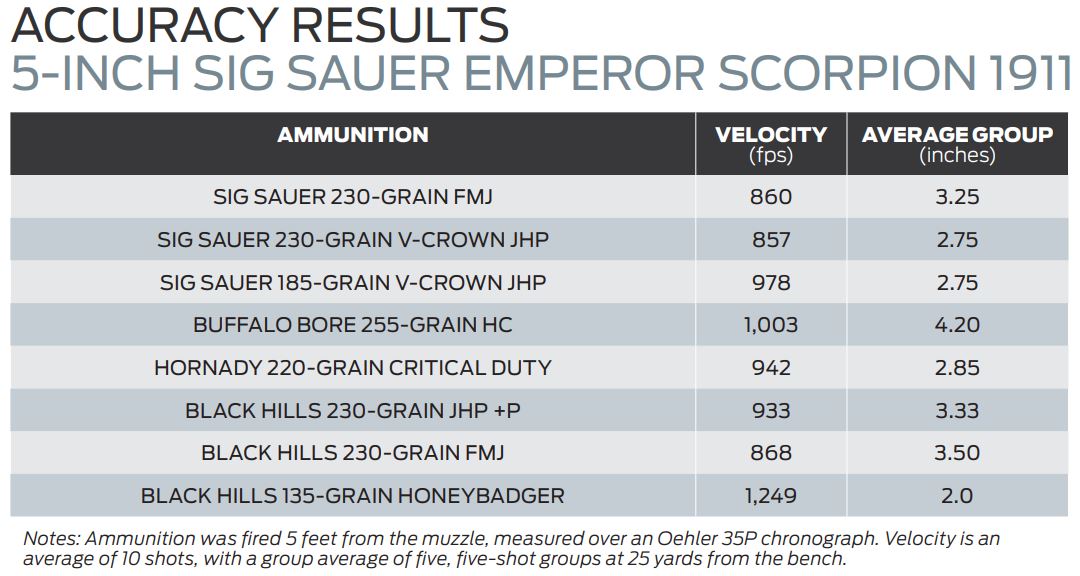

Next Step: Get your FREE Printable Target Pack
Enhance your shooting precision with our 62 MOA Targets, perfect for rifles and handguns. Crafted in collaboration with Storm Tactical for accuracy and versatility.
Subscribe to the Gun Digest email newsletter and get your downloadable target pack sent straight to your inbox. Stay updated with the latest firearms info in the industry.

![Best Concealed Carry Guns In 2025 [Field Tested] Wilson Combat EDC X9S 1](https://gundigest.com/wp-content/uploads/Wilson-Combat-EDC-X9S-1-324x160.jpg)


![Best 9mm Carbine: Affordable PCCs [Tested] Ruger Carbine Shooting](https://gundigest.com/wp-content/uploads/Ruger-Carbine-Shooting-100x70.jpg)
![Best AR-15: Top Options Available Today [Field Tested] Harrington and Richardson PSA XM177E2 feature](https://gundigest.com/wp-content/uploads/Harrington-and-Richardson-PSA-XM177E2-feature-100x70.jpg)

All I can say is that the 45ACP saved my life. I am not going to go into a long story but I will tell you that in 1974 as a Detective in the Baltimore City Narcotic unit I was the point man on a narcotic raid and had the occasion to chase a 230 lb 6’2″ suspect up a flight of steps in his house. When he saw that he could not outrun me he turned and pointed a .32 auto directly at my face at the distance of about 10″. I fired one shot from my Colt Commander and struck him in the left side under the armpit and blew him 8′ into the next room. The round hit him so hard that he could not pull the trigger and dropped the gun which was loaded and had a round in the chamber. The suspect also had 25 bags of heroin in his other hand and an extensive criminal record which included Assault and robbery and assault by shooting among other things.
So you are saying his body flew 8 foot through the air? Physics 101 proves that a bullet weight 230 grains more or less no matter what the velocity cannot move a man that weighs on average 180 to 200 lbs even 1 foot. He may have collapsed on the floor which is the body moving downward towards the floor but that is all I will give you on that one. Here is a link about the subject proving its impossible for a bullet to even knock a man off his feet let alone make him fly through the air for any distance.
https://www.scienceabc.com/eyeopeners/can-gunshots-really-knock-people-off-their-feet.html#:~:text=However%2C%20due%20to%20its%20small,the%20bullet)%20off%20their%20feet.
Did not fly. Was knocked. I was there. I shot him. I saw where he was when I shot him and I saw where he wound up on the floor in the next room. I was the one looking down the barrel. I will tell you another thing. I never heard my gun go off. I did see the muzzle flash but did not hear the gun go off. I really don’t care if you believe it or not. I just know what happened.,
The .45 acp is not the mythical cartridge people think it is. It does not knock people down, spin them around like a top or make them disappear in a red puff of mist. When the U.S. Military tested it on a hemet in 1945 (see the book “The Inglis Diamond”) the .45 acp bounced off a helmet at only a scant 35 yards while the 9×19 penetrated it at an astonishing 125 yards and might have done so even further away than that but no one was able to hit the helmet at a further away distance.
The famous or rather infamous Col. Thompson Chicago Stockyard tests of 1900 were a great hoax perpetrated on the U.S. ordnance board by Thompson whose stock yard tests proved the exact opposite of what he claimed and that was that the smaller calibers like the .30 ad 9mm Luger killed as well as the larger pistol calibers. Something he conveniently forgot to tell the Ordancie Board because he did not wish to prove his own bias about large caliber pistol cartridges being dead wrong (pun intended)
Velocity is everything in expansion and the .45 acp has far less velocity than hot loaded 9×19 loads or .38 super or 357 Sig. or .30 Tokarev. Because of this the .45 loses the expansion threshold of velocity far sooner than the faster pistol. cartridges.
The .45 acp holds less cartridges in the magazine in most guns as compared to the smaller cartridges and in a fire fight especially with multiple opponents high capacity is everything.
The .45 acp recoils beyond the comfort level of most shooters which is not conducive to accurate shooting as compared to the much milder recoiling 9×19 or .30 tokarev.
The grip circumference on a gun chambered for the 45 acp is often way to large for many people , especially women with smaller hands and shorter fingers. The 9mm can be had in a single stack magazine that is far smaller in circumference for people with short fingers and or small hands.
The .45 acp handguns are generally guns that are heavier than the 9mm making them more uncomfortable to carry all day and more difficult to conceal as well.
The difference in bullet diameter between the .45 acp and the 9mm is a scant 1/10 of an inch which proves that the supposedly better killing power of the .45 acp is just an urban legend. As a matter of fact when the .45 acp and 9mm and .38 special and .357 mag was tested on live pigs in Mexico by Pistolero Magazine they found no superiority of the .45 acp over the other cartridges at all and surprise , surprise the .357 mag did not kill any better than the .38 special did which proves the ancient “Moro Myth” about mythical drug crazed warriors from the U.S. war in the Philippine islands was just that a total myth as proven by the gun Writer Jan Libourel who did a study of U.S. Army records and found zero documented evidence that the .45 acp was the end all cartridge in the Philippine war of conquest. It worked no better than the .38 Colt or .45 Long colt.
Penetration and bullet placement are key to incapacitation and this has been known as far back as pre-1900 in Africa where people like W.D.M. Bell, Percival, Stigand, Lyell, Neuman, Southerland and a host of other professional market hunters used smaller caliber weapons like the .303 British, 7×57, 6.5mm and 8mm to kill thousands of elephants and other big dangerous game. Poor white Africa farmers used the same small calibers to rid themselves of big game marauders and man killers as also did black game rangers. As a matter of fact many of the much worshiped large elephant cartridges had such poor penetration they often got the market hunters killed as happened to Bill Judd who along with his son attempted to kill an enraged Bull elephant who refused to go down after being hit 6 times 4 ties with a .577 nitro express and twice with a .400/350
So who needs a .45 acp these days when modern expanding bullets make pistol calibers an individual choice? No one does unless one likes to envision himself (Walter Mitty incarnated) as part of a lost battalion surrounded by mythical drug crazed warriors charging with extended spears as you heroically blow them off their feet two mighty .1911 .45 acp guns in each of your hands. And when you are down to your last round in the magazine Walter Mitty style you flip away your cigarette butt and then tell your companions to flee the scene while you stay behind (Gary Cooper style in the movie “For Whom The Bell Tolls) to save everyone but yourself , heroic to the last round. End of scene and flag waving and patriotic music playing and smoke coming out of the end of the barrel of your 1911.
Maybe you’ve not seen the 45 HST +P. expands pretty good, nearly an inch. If one is so inclined, a 45 Super can be used in certain pistols with minimal mods. the 9mm just doesn’t expand that much. At all. Ever. If I need higher velocity with an auto, I’d go 10mm.